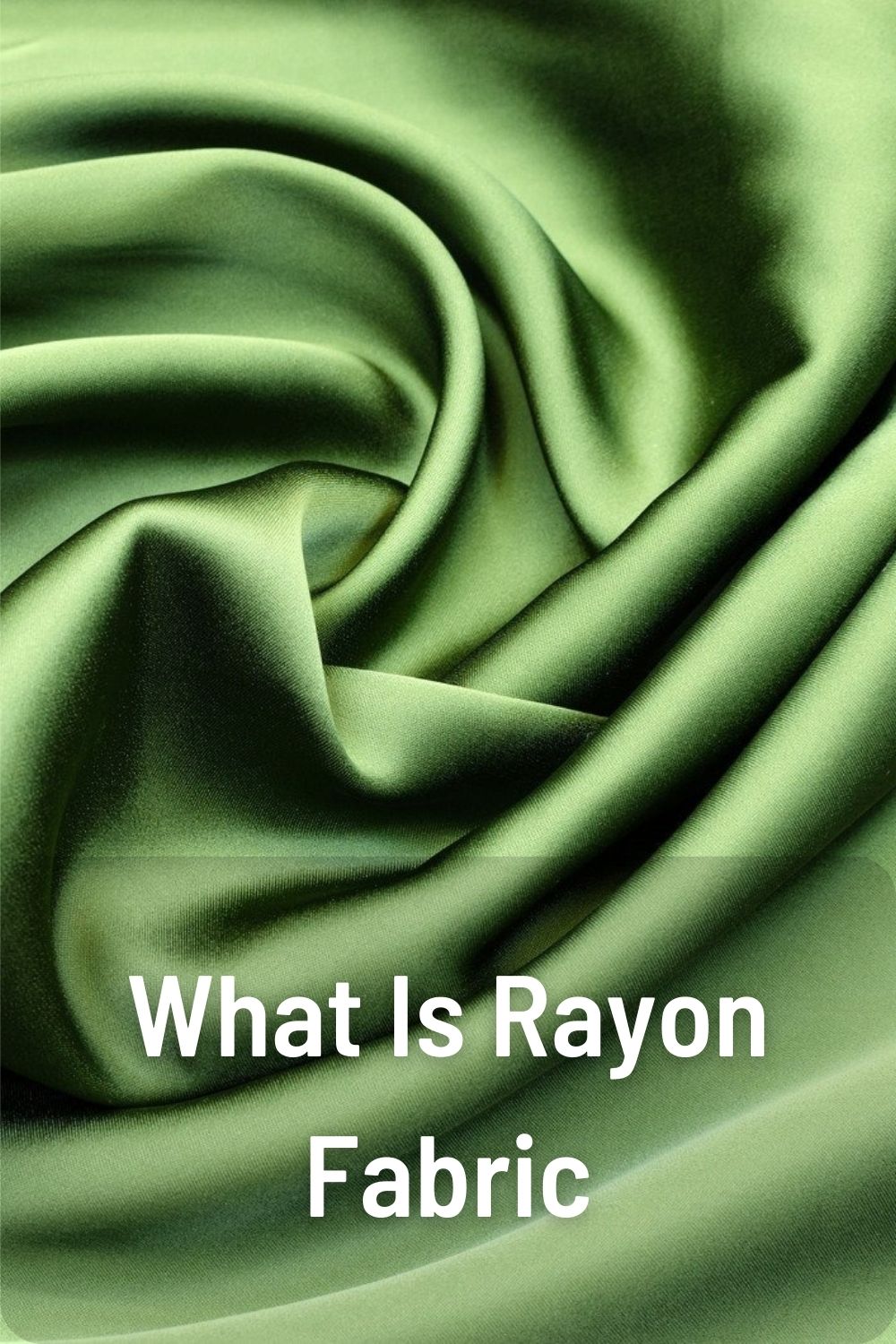
Rayon fabric is a versatile, affordable, and comfortable man-made fiber that has many uses in fashion, home furnishings, and industrial applications. In this comprehensive guide, we will examine everything you need to know about rayon fabric including how it’s made, different types of rayon, common uses, and care instructions.
Table of Contents
How Rayon Is Made
Rayon is a regenerated cellulose fiber, which means it is made from purified cellulose that comes from natural sources like wood pulp or cotton lint. The specific manufacturing process used to make rayon influences its properties and uses. There are three main methods of producing rayon fiber:
Viscose Method
The viscose method is the most common way to produce rayon. It uses a polymeric solution to turn cellulose into a liquid state that can be spun into fibers. Here is an overview of the viscose rayon production process:
- Step 1: The cellulose source (usually wood pulp) is treated with caustic soda to form alkali cellulose. This helps expand the cellulose structure.
- Step 2: The alkali cellulose is mixed with carbon disulfide to make cellulose xanthate, which dissolves the cellulose.
- Step 3: The solution is diluted then forced through a spinneret nozzle to produce long filaments of cellulose fiber in a bath of sulfuric acid, sodium sulfate, and zinc sulfate. This causes the cellulose to reharden into rayon threads.
- Step 4: The rayon threads are washed, bleached, dried, and wound onto spools.
The entire process is monitored carefully to produce uniform fibers. Adjusting factors like the amount of carbon disulfide used impacts the luster, strength, elongation, and absorbency of the finished rayon.
Cuprammonium Method
The cuprammonium process uses a cuprammonium solution of copper and ammonia to dissolve the cellulose. The steps include:
- Treating cellulose with caustic soda
- Dissolving the alkali cellulose in cuprammonium solution
- Forcing the solution through spinnerets into a sulfuric acid bath to reconvert it into cellulose filaments
- Desulphurizing, washing, bleaching and drying the rayon fibers
Cuprammonium rayon is known for its brightness and absorbency. It was the first commercial method of producing rayon in the late 1800s.
Lyocell Method
The lyocell process uses N-methylmorpholine N-oxide as the solvent to make cellulose solutions for extrusion. It is similar to the viscose method but is more environmentally friendly since it allows recovery of the solvent for reuse. Lyocell rayon is known by the brand name Tencel. It tends to be very smooth and highly absorbent.
Different Types of Rayon
There are many different varieties of rayon fiber produced using the manufacturing methods described above. Here are some of the main types of rayon fabric:
- Viscose Rayon: This is the most common type of rayon. It has a soft, silk-like texture and is moderately absorbent.
- Modal Rayon: Modal is a type of viscose rayon that uses a higher-quality cellulose source from beech trees. It is very smooth and absorbent.
- Lyocell Rayon (Tencel): As mentioned, lyocell uses a solvent-spinning process. It is soft, smooth, strong, and breathable.
- High Wet Modulus Rayon (HWM): HWM rayon is made using the viscose process. It has high durability and dimensional stability when wet.
- Cuprammonium Rayon: This absorbent type of rayon has a high luster. It was used in the first rayon fabrics.
- Polynosic Rayon: This is a modified rayon developed to improve wrinkle resistance, durability, and maintenance. It blends rayon with synthetic fibers.
- Rayon from Bamboo: Rayon made from bamboo cellulose has softness and breathability. Bamboo-derived rayon may be called viscose from bamboo.
Uses and Applications of Rayon Fabric

Rayon’s versatility, cost-effectiveness, and comfort make it valuable for many textile applications:
- Clothing: Rayon is commonly used in apparel like dresses, blouses, skirts, jackets, and lingerie. It is blended with other natural and synthetic fabrics in many types of clothing.
- Furnishings: Rayon-blend fabrics are used for furnishings like upholstered furniture, curtains, bedspreads, and table linens.
- Industrial Uses: Tire cords, hoses, belts, and other industrial products contain rayon as reinforcement. Its absorbency makes it useful for items like diapers and sanitary products as well.
- Medical Uses: Rayon is utilized as a cast padding and as a suture material in surgeries.
Some key advantages that make rayon a widely used textile include:
- Good comfort, drape, and versatility
- Natural look and feel of silk
- Easy dyeability across a range of colors
- Absorbency and moisture wicking
- Breathability and coolness
- Affordability compared to silk
- Strength and durability when needed
- Blends well with many other fibers
- Environmentally friendly regenerated fiber
By adjusting production methods, manufacturers can engineer rayon fibers with specific properties suitable for apparel, home goods, medical products, and industrial applications.
Rayon Fabric Care
Rayon requires more delicate care than synthetic fabrics but is generally easy to launder at home if proper steps are followed:
- Read Labels: Look for garment labels that specify washing instructions. Follow any special directions like “Dry Clean Only.”
- Wash Gentle Cycle: Use a delicate or gentle wash cycle with cool water to avoid damaging fibers.
- Mild Detergent: Stick to mild liquid detergents, not harsh powder types. Avoid bleach.
- Lay Flat to Dry: Do not wring or twist rayon. Just lay flat or hang to dry to prevent stretching.
- Iron Low Heat: Rayon scorches easily so iron on a low synthetic setting if needed after drying.
- Dry Clean If Unsure: If a garment label recommends dry cleaning, take it to a professional rather than risk shrinking or tearing.
- Avoid High Heat: Exposure to high heat can damage rayon, so avoid hot water, hot drying, and hot ironing.
With proper washing and drying methods, rayon clothing and fabrics will remain soft, colorful, and wrinkle-free for seasons of wear. Being aware of its delicate nature is key.
Pros and Cons of Rayon Fabric
Like any textile fiber, rayon has both advantages and disadvantages:
Pros of Rayon
- Soft, smooth feel
- Good comfort and drape
- Absorbent and breathable
- Easy to dye in various colors
- Mimics the look and feel of silk
- Relatively strong and durable
- Versatile for clothing and furnishings
- More affordable than natural silk
- Eco-friendly regenerated fiber
- Can be produced with custom properties
Cons of Rayon
- Wrinkles easily unless treated
- Can shrink if washed improperly
- Prone to discoloration/bleeding of dyes
- Loses strength when wet
- Some production methods use toxic chemicals
- Not as environmentally friendly as cotton
- Fabric pilling can occur
- Must be dry cleaned for some fabrics
Overall, rayon’s merits make it a smart choice for apparel, decor, medical uses, and industrial applications. Being aware of proper handling and cleaning methods for the type of rayon avoids many downsides.
Is Rayon Better Than Cotton or Silk?
Rayon is not universally better or worse than natural fibers like cotton and silk. The advantages and disadvantages compared to each fiber are:
Rayon vs. Cotton
- Rayon is softer and smoother than cotton.
- Rayon is more absorbent than cotton.
- Cotton is cheaper than rayon.
- Cotton is more durable, shrink/stretch resistant than rayon.
- Rayon drapes better and is more versatile than cotton.
Rayon vs. Silk
- Rayon is much less expensive than silk.
- Silk is more luxurious and prestigious than rayon.
- Rayon requires less special care than silk.
- Silk is more durable and resistant to pilling than rayon.
- Rayon has more variation in properties available.
The choice between rayon, cotton, and silk depends on the garment use, cost considerations, and desired qualities. Rayon has some advantages over both fibers in the right context.
Frequently Asked Questions About Rayon Fabric
Here are answers to some of the most common questions people have about rayon fabric:
Is Rayon natural or synthetic?
Rayon is a semi-synthetic fiber. It is made using natural cellulose sources like wood, cotton, or bamboo, but undergoes extensive chemical processing to produce the finished rayon material.
Is Rayon breathable?
Yes, rayon is highly breathable, which makes it useful for summer clothing and athleticwear. Its moisture wicking properties keep wearers cool.
Is Rayon stretchy?
Rayon itself does not have much elasticity, but it can be combined with spandex or other stretchy yarns to make rayon stretch fabrics.
Is Rayon good for skin?
The smooth, soft feel of rayon makes it very skin-friendly. It lacks the irritation and roughness that some people experience with pure cotton. Rayon’s excellent moisture wicking also helps prevent clamminess.
Is Rayon environmentally friendly?
Some types of rayon like Tencel lyocell use closed-loop manufacturing systems that recover and reuse solvents. This makes them among the most eco-friendly rayon varieties. Viscose rayon uses more toxic chemicals but is still better than purely synthetic fibers. Bamboo-based rayon is praised as sustainable if the raw bamboo is responsibly sourced.
Is Rayon cheaper than cotton?
Rayon is generally cheaper to produce than cotton since it comes from fast-growing regenerative cellulose sources like trees. However, availability and demand influence prices for both fibers. Staple cotton is usually the most affordable option.
Does Rayon shrink?
Rayon is prone to shrinking if washed in hot water or dried using high heat. Stick to a delicate cycle and lay flat or hang dry rayon items to prevent shrinkage. Some types of rayon are pre-treated for shrink/stretch resistance.
What is Rayon clothing used for?
Rayon is commonly used in all kinds of apparel ranging from formalwear like dresses, suits, and blouses to casual t-shirts, skirts, and athleticwear. It provides desirable qualities like softness, moisture wicking, drape, and comfort.
Is Rayon good for making ties?
Yes, rayon is an excellent choice for ties. Its softness, sheen, and drape mimic silk at a more affordable price point. Rayon ties can be produced in diverse patterns, textures, and colors. The material knots well while resisting wrinkling.
The Takeaway on Rayon Fabric
After reviewing this guide, you now have a solid knowledge foundation on rayon fabric. In summary:
- Rayon is a regenerated cellulose fiber made using wood pulp or plant sources.
- Different manufacturing methods like viscose and lyocell produce specific rayon properties.
- Rayon is used widely in apparel, furnishings, industrial products, and medical applications.
- It requires gentle washing and drying but offers comfort, softness, moisture wicking, and affordability.
- Rayon has advantages and disadvantages compared to natural fibers like cotton and silk.
- Adjusting production techniques allows extensive customization of rayon characteristics.
With proper selection and care, rayon fabric is an adaptable material that provides an exceptional combination of comfort, versatility, and value across many textile products people enjoy every day.